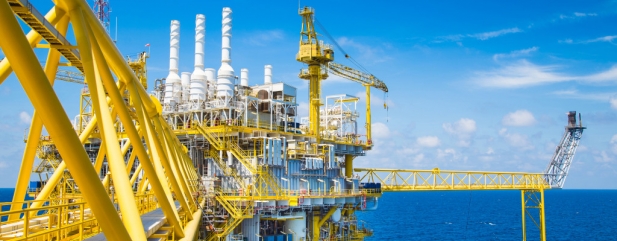Archived article
Please note that tax, investment, pension and ISA rules can change and the information and any views contained in this article may now be inaccurate.
Record high FTSE 100 profits forecast in 2019

The FTSE 100 is currently doing a good job of confounding the Cassandras, naysayers and pessimists with a capital gain of around 6% in 2019 to date, despite the ongoing uncertainty over global tariff and trade policies, Brexit and gathering concerns over the globe’s economic growth prospects.
The index’s advance may be the result of its valuation, since a forward price-to-earnings ratio of 12.5-times and a prospective dividend yield of 4.7% look attractive, both in absolute terms and also relative to the other geographic options available to investors.
Such relative lowly multiples could suggest a lot of bad news is already in the price, especially after the second-half slump in the index last year.
After a marked period of underperformance which stretches back to the summer 2016 referendum vote on EU membership, UK equities look unloved and may therefore be undervalued.
The question now is what could trigger fresh interest in the FTSE 100 and other UK stock benchmarks. The best catalyst of all would come in the fundamental form of positive momentum in both earnings and dividend forecasts.
PROFIT UPLIFT
Analysts expect the FTSE 100 to generate an all-time high pre-tax profit of £223bn in 2019. That is a 13% increase on 2018 and would finally take the index past the £202bn peak of 2011, when over £100bn in pre-tax profit came from the mining and oil sectors.
In 2019, oil producers and miners are forecast to churn out £74bn in profit, so the FTSE 100’s earnings power seems more broadly based, which should be a good thing.
Financials and consumer staples stocks such as Diageo (DGE) and Unilever (ULVR) are also expected to make sizeable profit contributions.
The decreased reliance on commodity producers, where prices and profits are difficult to predict, is also welcome. However, investors will need to keep an eye on the contribution to profits (and profits growth) from the financials, where the banks will have a key role to play.
Analysts expect Barclays (BARC), HSBC (HSBA), Lloyds (LLOY), Royal Bank of Scotland (RBS) and Standard Chartered (STAN) to increase profits in 2019 for the third time in a row and finally exceed 2007’s previous profits peak, at the end of the last credit, stock market and economic boom.
SHIFT IN MOMENTUM
The potential snag is that we have been here before. Analysts have predicted a new aggregate peak in profits from the banks for the past several years but that 2007 high of £35.8bn has remained tantalisingly out of reach.
There remains the risk that a final raft of PPI claims before the autumn deadline proves an obstacle to reaching and passing that 2007 number. The banks must also continue to invest heavily in IT and digitisation to reassure customers over cyber security and also fend off the threat posed by challenger banks and fintech rivals.
Competition to win deposits and offer mortgages has started to weigh on net interest margins in the UK and neither HSBC nor Standard Chartered will want to see too much of an economic slowdown in either China or Hong Kong, so dangers still lurk to the rosy profit scenario.
And for all of the bullish outlook on profits for 2019, it is worth noting that analysts have stopped upgrading their forecasts.
Positive earnings momentum helped to carry the FTSE 100 through the first half of last year, as analysts upgraded their profit forecasts and the index peaked on a closing basis at 7,877 in May, but the rate of increases slowed in the third quarter and came to a grinding halt in the fourth.
In aggregate, analysts’ earnings forecasts for the FTSE 100’s members have dropped by 7% so far this year, to £223bn from £242bn at the end of last year.
The pound’s rise against sterling and the euro will be having a major impact here, as this will decrease the value of overseas profits once they are translated back into pounds.
And given concerns over the growth outlook in the EU, China and the US (let alone that of the UK as the Brexit negotiations drag on) it is easy to pick holes in analysts’ forecasts for 13% pre-tax profit growth in 2019.
Yet this may already be reflected in the index’s lowly valuation, which takes us back to whether the UK represents contrarian value or not.
With 25 FTSE 100 members trading on 10 times forward earnings or less, it is tempting to think that the gloom may just be a little overdone and that even meeting, let alone beating, earnings forecasts could be enough to convince the doubters to return to UK stocks.
After all, the index stands some 10% below its prior all-time high, even if profits are forecast to reach a new peak this year.
Important information:
These articles are provided by Shares magazine which is published by AJ Bell Media, a part of AJ Bell. Shares is not written by AJ Bell.
Shares is provided for your general information and use and is not a personal recommendation to invest. It is not intended to be relied upon by you in making or not making any investment decisions. The investments referred to in these articles will not be suitable for all investors. If in doubt please seek appropriate independent financial advice.
Investors acting on the information in these articles do so at their own risk and AJ Bell Media and its staff do not accept liability for losses suffered by investors as a result of their investment decisions.

 magazine
magazine












